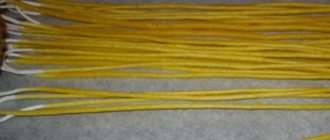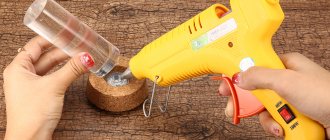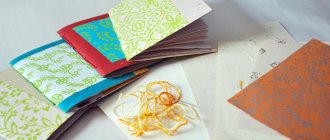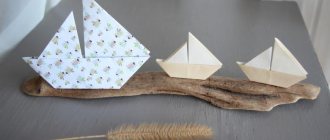Do you like to experiment and study the physical properties of various substances? Then the non-Newtonian fluid will delight all family members, since children are delighted with it, although adults too.
This substance, depending on the effect on it, can be liquid in one case, and solid in another. In this article you will learn how to make a non-Newtonian fluid at home and what fun experiments you can do with it.
Making a non-Newtonian fluid at home - method one
Prepare cold water, a deep bowl and a package of starch - potato or corn. Cooking method:
- pour a quarter of the package of starch into a bowl;
- slowly pour half a glass of water into a bowl. Stir. Add dye to water and get a colored mass;
- continue pouring starch into the bowl and pouring water little by little until a mass similar to jelly comes out;
- Stir the mixture until smooth. It is best to mix with your hands;
- pour the resulting liquid into a baking dish or other container. Stir it with your index finger in a circle - slowly at first and gradually speed up the movements. You have created an unusual substance.
It will take a lot of time to stir until the liquid becomes dense. Use water and starch in equal proportions, but often more water is needed. The liquid becomes dense as starch is added. You will end up with a white, viscous mass that you can pour into your palm.
Making a non-Newtonian fluid at home - method two
Prepare:
- ¾ tbsp. water and half a glass separately;
- 1 tbsp. PVA glue;
- 2 tbsp. spoons of borax.
Pour 3/4 cup of water into a deep plate and place glue there. Mix well. In another bowl, combine half a glass of water with borax. Stir until the borax is completely dissolved. Combine the two solutions in one container and mix well. If desired, add coloring during cooking. Place the non-Newtonian fluid in a bag, tie it and knead the mass. Store the substance in the refrigerator and demonstrate its properties as necessary.
How to make a non-Newtonian fluid at home - interesting experiments
- take a hand full of liquid and make a ball out of it. Remember and squeeze in your hand. If you roll the ball quickly, the mass will harden. If you roll it slowly, the liquid will spread over your hand.
- Place your hand in the liquid and try to sharply extend your arm. Your hands will be cemented into the mass, as it were, and will lift the bowl of liquid into the air;
- Slowly lower your hand into the liquid and sharply squeeze your fingers there. You will see that a hard layer has appeared between the fingers;
- Slam the plate of liquid firmly with your palm. Your spectators will scatter to the sides to avoid getting dirty. But the unusual liquid will remain in the bowl;
- pour the substance from one container to another. You will see that the liquid pours from above and freezes below.
Non-Newtonian fluid made at home is not used anywhere. It is intended for entertainment. Try to come up with something new with it, create and invent. Children love these types of experiments!
How to make a non-Newtonian liquid with your own hands from starch at home? In this material you will find detailed instructions, photos and videos of a non-Newtonian fluid.
Do you think it is possible to walk on water? Oddly enough, this is possible if water is replaced with a non-Newtonian fluid. How to make a non-Newtonian fluid? It's simple, for the experiment we need 200 grams of starch, a glass of cold water and a speaker. The speaker must be large enough.
Cut the bag of starch and carefully pour its contents into a bowl. Now add water to the starch. Don't add too much water or you won't get a non-Newtonian fluid.
Mix starch in water. When stirring, you can feel that the faster the spoon moves through the starch, the more difficult it is to stir it. And vice versa, the slower you move the spoon, the easier the substance is mixed.
What is a non-Newtonian fluid? This is a liquid that exhibits the properties of solids and liquids depending on the speed of action on it.
Look, I sharply hit the liquid with my finger. With each blow it hardens, and the finger remains almost dry. And the faster my finger moves, the harder the liquid becomes. And if I insert my finger slowly, it will easily enter the non-Newtonian fluid.
You can also roll a non-Newtonian fluid into a ball. So I take the liquid in my hands and begin to influence it and it hardens. But as soon as I stop the impact, the solid ball turns into liquid.
A non-Newtonian fluid can be rolled on a table. Notice how part of the liquid that remains unaffected rolls off to the sides in drops.
Let's see how a non-Newtonian fluid behaves under the influence of sound waves. Let's send sound to the speaker at a frequency of 100 hertz. Watch the show unfold on the speaker. Now let's add some paint.
Why does this happen and a non-Newtonian fluid becomes either solid or fluid? The fact is that when starch gets wet, strong bonds are formed between its molecules.
When a shock wave of sound hits the molecules, the bonds between the molecules behave like an elastic spring, so the starch hardens.
The same thing happens with a sharp blow with a finger. But if you insert your finger slowly, the bonds between the molecules are easily broken.
Non-Newtonian fluid can be used, for example, in body armor. When a bullet hits a bulletproof vest sharply, the non-Newtonian fluid will distribute the force of the impact over a larger area and better protect the soldier.
Video of an experiment about a non-Newtonian fluid
Do you like to experiment with children? Then the non-Newtonian fluid will delight the whole family. This substance, depending on the speed of work, is both liquid and viscous. How to prepare a miracle liquid? Details in the article.
Ways to create Newtonian fluid at home
So, there are several simple ways to make a Newtonian fluid:
You need to mix starch and water, and you need to knead this mixture thoroughly, adding water. If there is little water, then such a substance will remain in a solid state for a long time; if you add a lot of water, then it will very quickly become liquid. It also happens that you have too much water in the bowl, then you need to wait a little: the starch will settle, you can drain the excess water and then add some starch.
Try to make a ball from the resulting material, and if you roll it quickly, it will become harder, if you do it slowly, it will spread over your hand.
The second method or “ordinary flubber”
Pour 3/4 cup of water and one cup of PVA glue into a separate bowl, mix these ingredients thoroughly and proceed to the next step.
In another bowl, you need to mix half a glass of water and 2 tablespoons of borax. Stir until the borax dissolves. Then combine the two resulting solutions and mix.
You can add coloring. After this, you need to place the resulting Newtonian fluid in a bag, close it and knead it. The resulting substance can be stored in this form.
The third method is “smart plasticine”
For this method you will need the following components: PVA glue, sodium tetrabarate, food coloring.
Take a bowl, pour glue (about 100 grams), add dye and mix. Next, you need to add sodium tetrabarate and mix until a dense mass is formed.
The fourth method is “edible Newtonian fluid”
Take a saucepan, pour in the condensed milk, put it on low heat, add a spoonful of starch, continuing to stir slowly. Once the liquid has thickened, you can add food coloring and stir everything again. Leave the resulting liquid on the window to cool. Be careful as Newtonian fluid can stain clothing and other items.
I confess, I was lost for a long time. So much has happened over these few weeks!
My son's graduation from kindergarten, dances and English courses.
As I already told you, I’m getting my son ready for school for grade 0. We didn’t get into one school based on a competition, now we’ll try to get him into another.
Constant pain alternates between me and my son. As luck would have it, they don’t stop pouring on us, I’m already tired of it.
A small planned operation that my son finally had yesterday, but the preparation for which took so much energy from us, his parents, that in the end we didn’t want anything.
My blues, combined with a midlife crisis, reared its head again - I already thought that it was long in the past. It turned out that my hopes were in vain.
Again, all dreams and plans are going to hell, because events are changing at an unimaginable speed. You decide to do something tomorrow, but in the morning everything turns upside down and you only have time to solve problems that appear out of nowhere. I’m even afraid to make any plans for the upcoming ten-day vacation in July.
It's a wild mess at work again. You do one thing, and before you have time to breathe a sigh of relief, another falls from the clear blue sky.
Again, my schedule at work is completely disrupted due to the fact that some unforeseen situations constantly arise. So you have to work from the first shift, then from the second. As a result, the biological clock is completely thrown off.
Again, mutual misunderstanding with old friends who appear and disappear, and you sit there like a fool and wonder what was that?
In general, there’s a lot of things, I don’t want to bore you with the list. I’d rather give you a piece of our summer in the city park – a birch grove with a lawn overgrown with celandine:
Well, today I want to tell you about a non-Newtonian fluid, which we finally made with our son, when once again we had to sit at home, recover and look for something to do with this restless creature. I heard and read a lot about this interesting substance, but for some reason I was afraid to do it, it seemed to me that it was very difficult.
It turns out that making a non-Newtonian liquid with your own hands is very simple, and preparing it will not be difficult at home.
Why is it called that? I think it’s better to ask physicists, since this is still more of a physical experiment than a chemical one, but I would venture to suggest that it’s all about the properties. An ordinary liquid, subject to the classical laws of physics formulated by Newton, behaves as we are accustomed to.
Imagine water. It flows, you can pour it from vessel to vessel, you can stamp your foot on it, raising clouds of splashes, you can splash it, splash it in all directions - and it will remain unchanged in its physical properties, it will always be liquid, flowing. There are many such examples - milk, gasoline, acetone, etc.
What is a non-Newtonian fluid? This is a substance that behaves completely unexpectedly when a force is applied to it. For example, in a calm state it is a pliable, flowing substance that can be spilled on the table, forming an ordinary unremarkable puddle.
But if you want to hit this puddle with your fist or, better yet, with a hammer, you will encounter unexpected resistance - the soft puddle will suddenly become hard and may even shatter into fragments. That is, it turns into a solid body.
The properties of such a solution are related to viscosity, or more precisely, to its change under external influence. As long as you do not apply any force to this solution or try to subject it to any deformation, you will have an obedient liquid in your hands. As soon as you applied force, that is, changed the external influence, the viscosity instantly changed. Moreover, the higher the speed, that is, the faster you apply the external force, the more the viscosity will change.
Perhaps I'm not explaining it very well? Physicists, hey, please respond, is this true or not?
The most common example of such a substance is starch mixed with water. How to make this interesting liquid from it yourself? To be honest, I didn’t follow the recipes and proportions that I came across. Everything was done “by eye,” but it turned out so interesting that my son and I spent almost the entire evening in the kitchen, playing with the resulting substance, making up the table, walls, floor, and even a little of the ceiling. But it was worth it. Both had more than enough joy!
I bought corn starch by weight at the market. I can’t even say who made it, since it was an ordinary plastic bag without any identification marks. 1 kg costs 380 tenge, which is approximately 70 Russian rubles.
I poured it into a bowl and began to gradually add water, stirring immediately. At some stage I felt that the spoon was beginning to turn with difficulty in this kind of “dough”, as if in hardening cement.
I put the spoon aside and started trying it with my hands - if you slowly immerse your hand in the solution, it calmly sinks to the bottom of the plate. If you sharply hit the surface of the solution with your palm, it seems as if you are knocking on something hard, but your hand remains dry and clean.
They say that instead of corn starch, you can use potato starch. I fully admit it, but I can’t say anything from my experience, since I only tried it on corn. I think that this does not matter, since, in essence, the composition is the same; in any case, the result is a solution of a polymer (starch is a natural polymer), that is, large molecules that are connected to each other in a variety of positions, which determines such interesting properties of the resulting solution.
So we spent the whole evening doing a variety of experiments with our son. Very interesting tactile sensations, no less funny than with the same hydrogel.
They dipped their hands, spoons, and forks into the solution. They hit the solution sharply and poured it slowly and quickly. If you put your hand under the stream while pouring, the flowing stream instantly hardens, hitting your fingers.
Then I remembered that I once saved an article about how to make homemade kinetic sand, it also needed cornstarch. Why not give it a try, since you've already started pigging out in the kitchen? I just had clean, sifted sand, which I once prepared for experiments with “chemical snakes.”
All you need to do is mix sand, starch and water. They mixed it - it turned out to be garbage. Not kinetic sand at all, but an amazingly convenient version of a non-Newtonian liquid that does not dirty your hands and, nevertheless, does not lose its unusual properties.
You can mix it, pour it, roll it into balls, throw it forcefully on the table, hit it with your hands. For example, you can roll it into a sausage - while you roll it in your hands, it is hard, but as soon as you stop rolling it, it immediately turns into a puddle right in the palm of your hand.
In general, we played a lot, from the heart, with great pleasure. I didn’t even feel sorry for spending time cleaning the kitchen afterwards – there was too much joy and good emotions. So, if you haven’t done such an experience before, then try it, you won’t regret it.
Well, I say goodbye to you, my readers... I don’t know for how long. Most likely, there will be much fewer articles in the summer. I’ll try to “go live” at least once a week, but I don’t know what will come of it. As I already said, things happen too unpredictably for me. And I can’t understand why.
Have a nice summer everyone and don't be sad!
Subscribe to blog news
You have successfully subscribed to the Kidschemistry.ru blog news
1 comment left on this article
Name removed due to commenting rules
And mainly from the point of view of practice (as a description and in the form).
Non-Newtonian fluid and hand gum (also known as hand gum) are a bird of a feather. Or rather, the second is a special case of the first. And the first is a more general category








